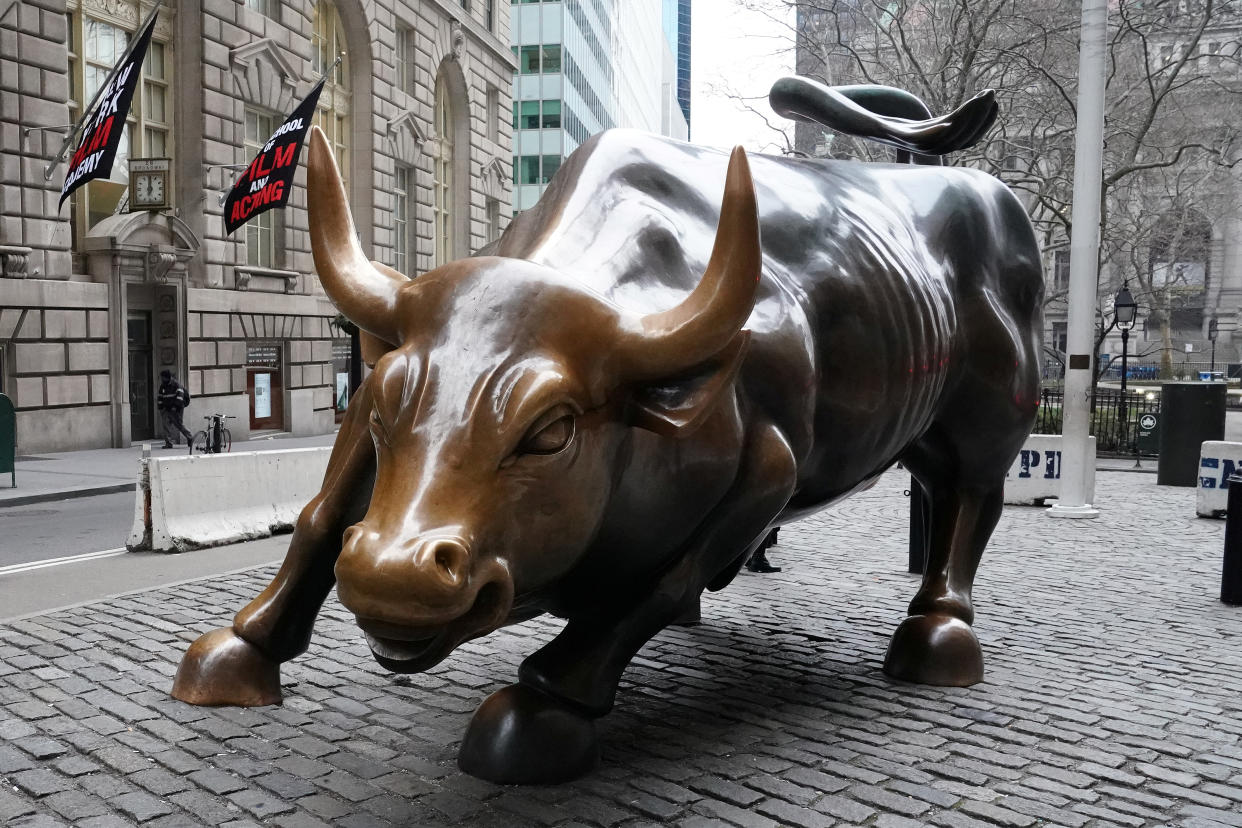Why our obsession with bull markets is...'bull'
If you listen to what many market commentators and journalists are saying these days, you know — or think you know — that US stocks are in a bull market. That’s because on June 8, the Standard & Poor’s 500 Index closed at 4,294, the first day it was more than 20% above its recent low of 3,577 on Oct. 12, 2022.
A 20% rise from a recent low, these people say, means that we’re in a bull market. To which I say, “bull.”
The idea that a 20% rise from a recent low puts us in a bull market has no rational basis that I can see, just as the idea that a 20% drop from a recent high means that we’re in a bear market has no rational basis that I can see.
Calling a bull or bear turn in the market sure does get attention, attracts eyeballs, and generates talk. But waiting for supposed bull markets to buy — and waiting for supposed bear markets to sell — doesn’t feel like a rational way to put money to work.
That’s especially true of this market, most of whose rise is based on eight stocks — which I call the Elite Eight. (See box below.)
Rather than being the zillionth writer to chew over the S&P, I decided to use a much broader, and far less well-known, index: the FT Wilshire 5000. That’s because the Wilshire, which Wilshire Indexes says currently has 3,480 stocks, covers the total US stock market. That gives us a much better overall picture of what’s going on than the S&P, with its 503 stocks, does.
In addition, the Wilshire — which back in the day really did have about 5,000 stocks — measures total return: stocks’ price moves up or down plus reinvested dividends. That’s much closer to investors’ actual experience than measuring just price changes, as the S&P does.
And finally, the Wilshire weight of the Elite Eight was only 24% as of June 13, the date I’m using for this column, compared with their 27% in the S&P. That makes them a tad less distortive of the total market than of the S&P. But even though the Elite Eight are less than a quarter of the Wilshire, more than two-thirds of the Wilshire’s 14.3% return so far this year comes from those eight stocks.
So if this really is a bull market, we’re looking at a very skinny bull.

That’s a major reason that some skeptics, including me, think this is an alleged bull market determined by arbitrary numbers. As opposed to a classic bull, in which rational investors are rationally expecting to get “real” returns — returns substantially over the expected rate of inflation — for an extended period.
Someone who also doubts that we’re in a bull market is Philip Lawlor, Wilshire’s managing director for market research. Lawlor notes that even though on June 13, the Wilshire was up 21% from its October low, it was still about 10% below its all-time high, set on Jan. 3, 2022.
“It’s trite, it’s extremely naïve,” he said of the 20% standard. “People want something pithy and succinct,” he told me. “That’s always driven me batty.”
However, he said, “that’s not how institutional investors approach markets.” Institutional investors, who Lawlor spends lots of time dealing with, are the biggest factors driving the market. Individual investors make the news, but institutional investors are vastly more influential over the long term.
Lawlor thinks that last year’s sharp decline — the Wilshire ended the year down 23% from its Jan. 3 all-time high — was a temporary break in a long-term upward trend, not a bear market. “Interestingly,” he wrote in a memo he sent me, “the 2022 drawdown has not broken the real [inflation-adjusted] return up-trend, implying that the cult of equity remains intact.”
Dan Wiener, chairman of Adviser Investments in Newton, Mass., made points similar to Lawlor’s. In a June 13 commentary headlined, "Why This Bull Market is Full of It," Wiener wrote that “despite the S&P’s rise, it remains 8.9% below the record Jan. 3, 2022, high…A simple 20% rise from a bear market low is no bull market in my book. Until the S&P crosses 4796.56, the January 2022 high, the bear's still [got] her claws in us.”
So what does all this bull market talk mean to those of us who are retail investors rather than market professionals?
Not a whole lot. Don’t get overly excited because you keep hearing that we’re in a bull market, and don’t get overly scared when you hear that a bear market is upon us, which will happen sooner or later. Stay invested for the long term. And make sure that you’ve got enough staying power — both psychologically and financially — to follow your plan, whatever that may be.
In other words? Reading and hearing about bull markets and bear markets can be a lot of fun. But don’t let that determine what you do with your money.
-
Allan Sloan, who has written about business for more than 50 years, is a seven-time winner of the Gerald Loeb Award, business journalism’s highest honor. He’s won Loebs in four different categories over four different decades.
